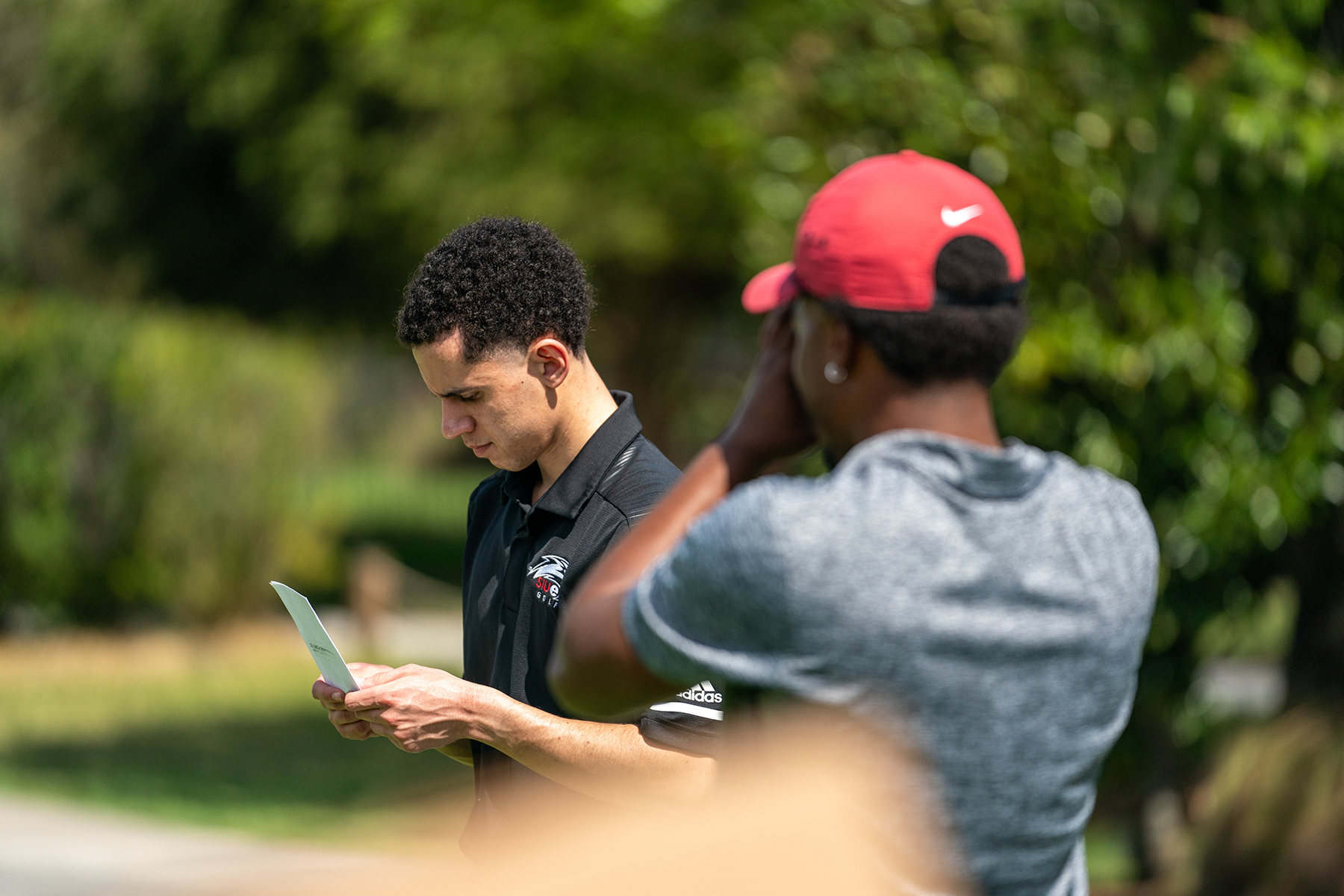quick coaching
3 Secrets to Prepare for Golf Courses & Lower Your Handicap
By Keith Stewart, PGA
Published on

Conor Dore looks at his score card on the first tee of the Dye Course at the APGA TOUR Black History Month Classic held at the PGA Golf Club on February 19, 2021 in Port St. Lucie, Florida. (Photo by Rachel Harris/PGA of America)
The majority of amateur golfers play the same handful of courses all the time.
That’s definitely a benefit and one we need to take better advantage of to lower our everyday scores. It doesn’t matter what your handicap is, all players can learn to break down a golf course.
Believe it or not, golf course architects are habitual just like you and me. Within those tendencies, we can learn how to break down a course from the computer, for a different view and just a better general awareness.
Here are three quick keys to lowering your score by learning to see what’s out there…
1) Ever heard of Google Maps?
- Whether it is your home course or one you’re planning to play this weekend, look at the layout online. Viewing a course from a drone’s perspective is eye-opening.
- The first step is to chart the fairway bends. Does the course have a left or right balance? If the balance is right, that means more holes are turning in that direction and favor a left to right ball flight. If you routinely play a course with six left turns, I’d start practicing that trajectory!
- What direction does the course face? There will be a compass on the page. Print that map out and write the four points on the map in permanent marker. Once you establish north, south, east and west you’ll be ready to take on the wind. Golf courses twist us around. Carry that map in your bag. If you have a question about the wind in your round, pull it out and decipher the direction. (Tiger Woods taught me that one.)
2) Look Behind You
- We play the same holes all the time and make similar mistakes. The issue isn’t the course, it’s us. We need to change our approach. We go where we look. Architects are very skilled at catching our attention. Next time you play, after you finish putting out, look back at the hole you just played.
- This will completely change your perspective. Suddenly you will see more open areas and safe landing spots. Take that new outlook and apply it to your next round. You’ll be amazed at how much more comfortable you will feel over certain shots with this new knowledge in mind.
3) Dear Diary
- The placement of mounds, cross bunkers, and penalty areas all seem very random at times. They are NOT. On the back of your “wind map,” start to keep a list of the trouble. When you hit a shot and end up in one of these areas, write down the distance of that shot. Keeping a detailed log of different yardages to certain on-course obstacles will also build confidence.
- We are going to hit bad shots. The key is, start choosing to aim at areas or select clubs that won’t end up in these situations. A personal yardage book will help immensely. Start writing one during your next round.
The most rewarding coaching situations happen when the “a-ha” light goes on in someone’s head. I bet yours just went off a couple of times while reading this article. Take that enlightenment and begin to break down those courses you play all the time.
Once you do, your scores will drop and your on-course winnings will increase.
Keith Stewart is a 5-time award-winning PGA Professional with 25 years of experience in the golf industry. His network of players, coaches and insiders provide him with a unique perspective on the game. He's a writer on PGA.com and host of the ProShow on ESPN 920 AM Friday afternoons at 3:00pm EDT. Check out his PGA Coaching articles archived here or his conversations on air with this link to his website The ProShow.